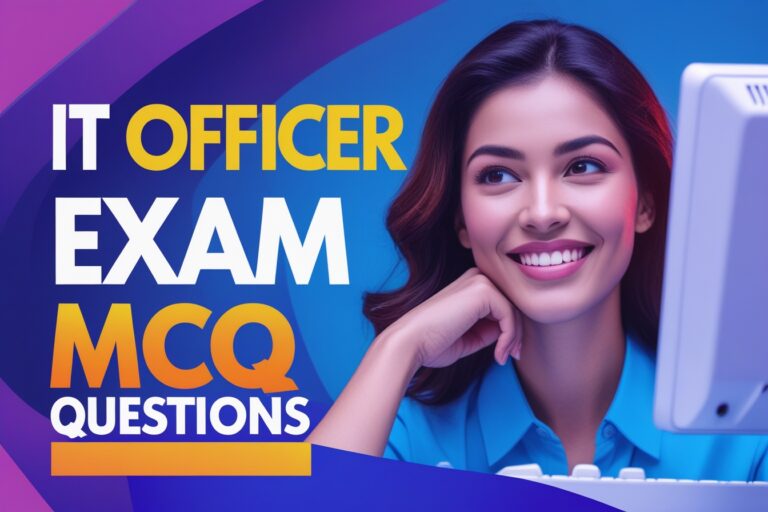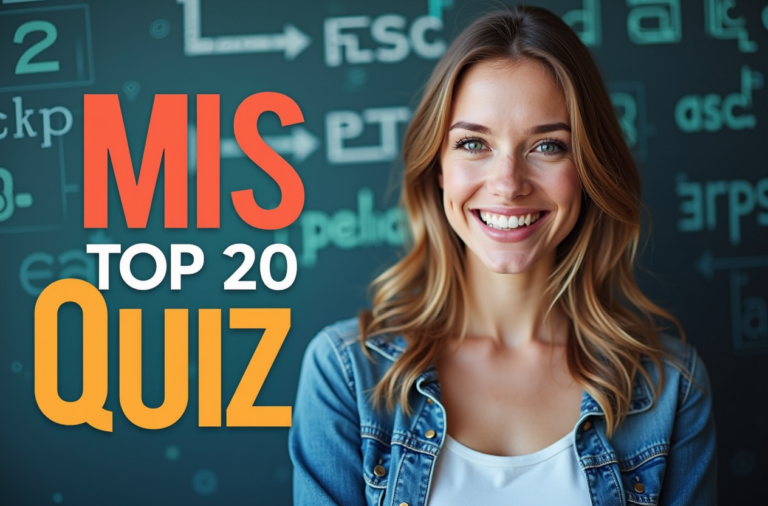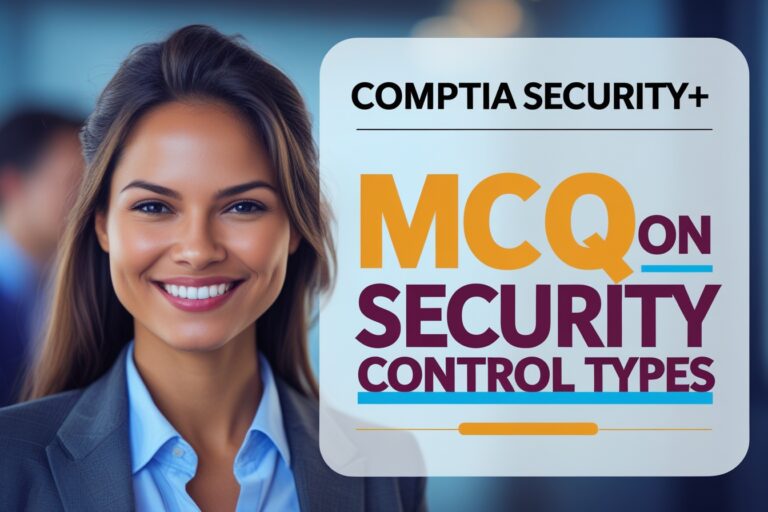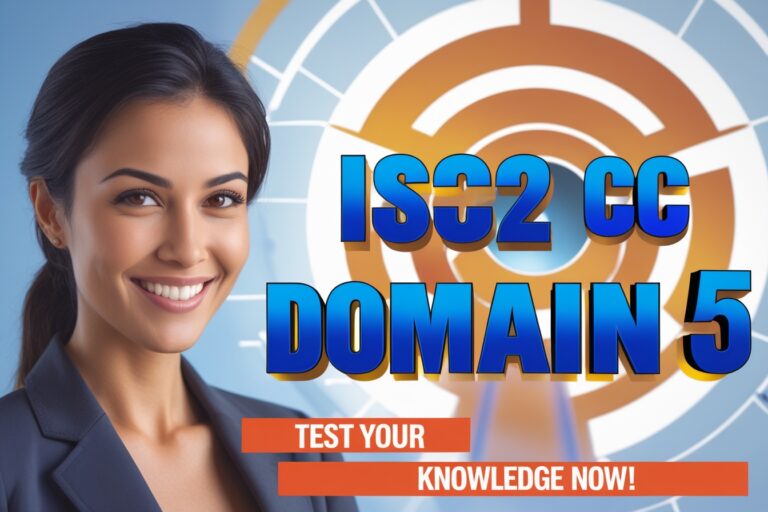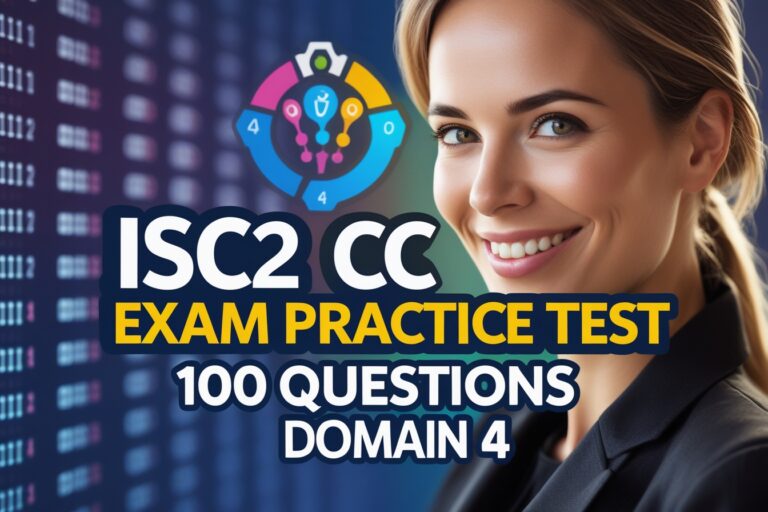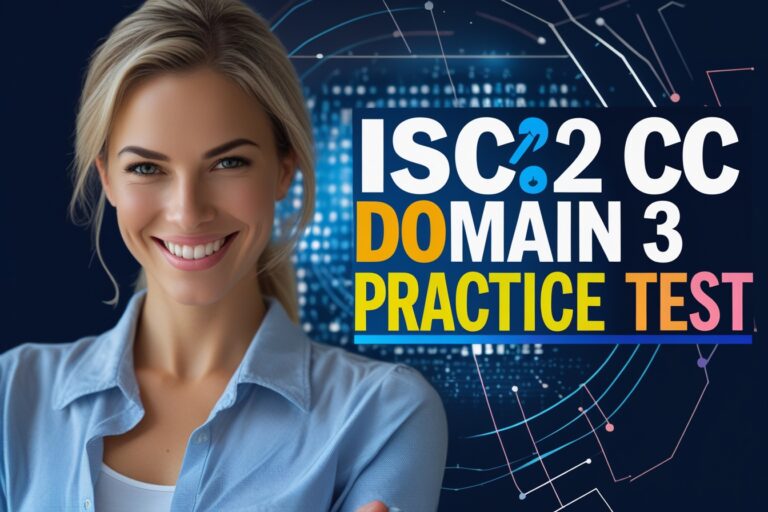Ace your next IT officer exam by preparing with the most essential 30 IT officer exam MCQ questions to get ahead by leaps and bounds.
1. In an analog computer
A. The input is first converted to digital form
B. Input is never converted to digital form
C. Output is displayed in digital form
D. All of the above
2. Integrated circuits are related to ……………………. generations of computers.
A. Second
B. Third
C. Fourth
D. Fifth
3. Which of the following storage types is the fastest?
A. Register
B. RAM
C. ROM
D. Blu-ray disc
4. Cache Memory ……
A. Helps to store more data in a hard disk
B. Stores data permanently
C. Holds the last time a website was visited
D. Placed between the main memory and the microprocessor
5. Which type of software is focused on supporting communication, collaboration, and coordination?
A. E-business software
B. CRM software
C. groupware
D. SCM software
6. A data structure where elements can be added or removed at either end but not in the middle.
A. Linked list
B. Stacks
C. Queues
D. Deque
7. Which of the following sorting algorithms is of the divide and conquer type?
A. Bubble sort
B. Insertion sort
C. Quick sort
D. None of the above
8. ……………….. of a binary search tree starts by visiting the current node’s left child, then its right child, and finally the current node itself.
A. Preorder
B. In-order
C. Linear-order
D. Post-order
9. In the ……………. traversal, we process all of a vertex’s descendants before we move to an adjacent vertex.
A. depth-first
B. breadth-first
C. with-first
D. depth-limited
10. The Design Phase of the System Life Cycle does not include,
A. Identify the functions to be performed
B. Design the input/output and file design
C. Defining basic parameters for system design
D. Deciding the hardware and software
11. ………… develop an agenda, act as facilitator, and lead the JAD session.
A. Project Leader
B. Record Keeper
C. Time Keeper
D. Top Manager
12. A data flow can
A. Only emanate from an external entity
B. Only terminate in an external entity
C. Emanate and terminate in an external entity
D. Either emanate or terminate in an external entity, but not both
13. In the E-R Diagram, the derived attribute is represented by
A. Ellipse
B. Dashed ellipse
C. Rectangle
D. Triangle
14. Determining if employees, managers, and clients will resist a proposed new system is part of this feasibility study
A. technical feasibility
B. Economic feasibility
C. Organizational feasibility
D. operational feasibility
15. Which scheduling policy is most suitable for a time-shared operating system?
A. Shortest job first
B. Round-robin
C. Elevator
D. First-come-first-serve
16. Which is the most suitable scheduling scheme in a real-time operating system?
A. Round robin
B. First come, first served
C. Preemptive scheduling
D. Random Scheduling
17. Which of the following is/are the operating system policy for virtual memory management?
i) fetch policy ii) placement policy iii) replacement policy iv) cleaning policy
A. i, ii and iii only
B. ii, iii and iv only
C. i, iii and iv only
D. All i, ii, iii and iv
18. A direct method of deadlock prevention is to prevent the occurrence of ………….
A. Mutual exclusion
B. Hold and wait
C. Circular waits
D. No preemption
19. Failure during inter-process communication may be due to ……
A. loss of request transfer unit
B. single datagram messages
C. multi datagram messages
D. message passing
20. To select all columns from the table, the syntax is:
A. select all from table_name
B. select * from table_name
C. select from table_name
D. None of the above
21. In a relational schema, each tuple is divided into fields called
A. Relations
B. Domains
C. Queries
D. All of the above
22. The number of tuples in a relation is called its …………. While the number of attributes in a relation is called its …………………
A. Degree, Cardinality
B. Cardinality, Degree
C. Rows, Columns
D. Columns, Rows
23. The main task carried out in the …………… is to remove repeating attributes to separate tables.
A. First Normal Form
B. Second Normal Form
C. Third Normal Form
D. Fourth Normal Form
24. In SQL Server, ………………… is based on relationships between foreign keys and primary keys or between foreign keys and unique keys.
A. Entity integrity
B. Domain integrity
C. Referential integrity
D. User-defined integrity
25. Which of the following is not a database recovery technique?
A. Deferred update
B. Immediate update
C. Two-phase commit
D. Undoing
26. What is data integrity?
A. It is the non-redundant data contained in the database.
B. It is the data contained in the database that is accurate and consistent.
C. It is the data contained in the database that is secured.
D. It is the data contained in the database that is shared.
27. ……………. is concerned with realizing a software design using an object-oriented programming language.
A. Object-oriented analysis
B. Object-oriented methods
C. Object-oriented design
D. Object-oriented programming
28. Which of the following is allowed in a C arithmetic instruction?
A. [ ]
B. { }
C. ( )
D. None of the above
29. In C++, the keyword void was used …………
A. To specify the function’s return type when it is not returning any value.
B. To indicate an empty argument list to a function.
C. To declare the generic pointers.
D. All of the above.
30. All Java classes are derived from
A. java.lang.Class
B. java.util.Name
C. java.lang.Object
D. java.awt.Window
Answers:
- B. Input is never converted to digital form
- B. Third
- A. Register
- D. Placed between the main memory and the microprocessor
- C. groupware
- D. Deque
- C. Quick sort
- D. Post-order
- A. depth-first
- D. Deciding the hardware and software
- A. Project Leader
- C. Emanate and terminate in an external entity
- B. Dashed ellipse
- D. operational feasibility
- B) Round-robin
- C. Preemptive scheduling
- D. All i, ii, iii and iv
- C. Circular waits
- B. single datagram messages
- B. select * from table_name
- B. Domains
- B. Cardinality, Degree
- D. Fourth Normal Form
- C. Referential integrity
- C. Two-phase commit
- B. It is the data contained in the database that is accurate and consistent.
- D. Object-oriented programming
- C. ( )
- D. All of the above
- C. java.lang.Object
You May Also Like:
- IT Officer Exam MCQ Questions Part 1
- IT Officer Exam MCQ Questions Part 2
- IT Officer Exam MCQ Questions Part 3
FAQs for IT Officer Exam MCQ Questions
How many questions are included in the “IT Officer Exam MCQ Questions”?
This set of “IT Officer Exam MCQ Questions” includes a collection of 30 hand-picked MCQ questions. This comprehensive set contains all major and minor topics that are usually covered in your real examination. They comprise high-quality and quantity practice questions, which are enough for you to pass.
What topics are covered by this set of “IT Officer Exam MCQ Questions”?
This set of “IT Officer Exam MCQ Questions” covers the topics of computer basics, network architectures, data structures, programming in C, C++, and Java, database management systems, and system administration. Every MCQ question on the IT Officer Exam is meant to assess both theoretical and practical elements.
What are the eligibility conditions for the IT Officer Exam?
Eligibility to appear in the IT Officer Exam may differ from one organization to another and from one post to another. But usually, they need a bachelor’s in computer science, IT, or an equivalent degree. Other engineering degrees with a strong computer science focus may be considered. Other than educational requirements, some jobs may require experience in a specific field, which is usually 1-3 years of working in the IT field.
Read More: MCQ Questions for Computer Officer Exam

